After the Railroad
After the Railroad
Manufacturing jobs increased dramatically after the railroad arrived as needed supplies could be shipped in more easily. Additionally, finished products could be shipped to distant markets.

Working in a Dangerous and Challenging Environment
Running the trains, whether freight or passenger, meant higher pay, as well as increased risks.Featuring:Seth Copp, (1823 – 1890), train engineerPatrick H. Morrissey, (1862 – 1916), brakemanLeonard Seibert, (1831 – 1905), carpenter
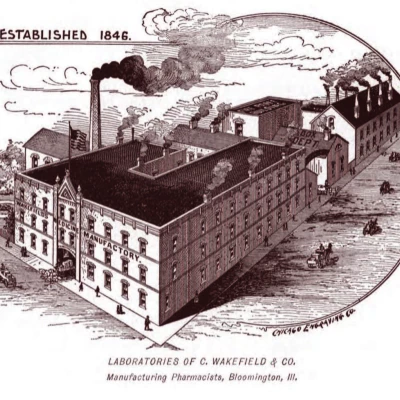
Reaching a National Market
Because of railroad shipping, manufacturers like Wakefield could sell their products throughout the nation. Featuring:Cyrenius Wakefield, (1815 – 1885), inventor & factory ownerBenjamin F. Reeve, (1856 – 1925), newspaper printer

Producing for an International Market
Featuring:George Hoagland, African American inventor and factory ownerHenry Conrad, cobblerFrank C. Abbott, (1859 – 1926), soda entrepreneur
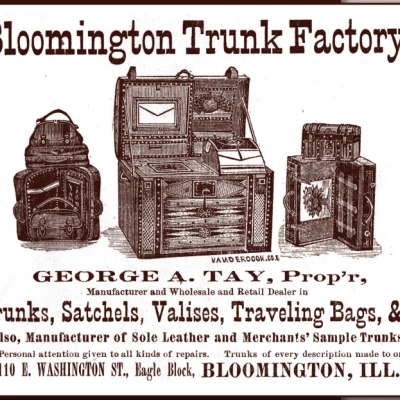
Providing for a Regional Market
Thanks to the ease of railroad shipping, many local manufacturers were able to sell their goods beyond McLean County.Featuring:Arnold Reigger, (1831 – 1913), Stove pattern makerRichard Allen, (1832 – 1899), stove assemblerGeorge A. Tay, (1842 – 1916), trunk builderMamie Delaney, (1864 – 1932), seamstress at Klemm’s Shirt & Overall FactoryBerthold “Bert” Embach, (1835 – 1879), Meyer Brewing Company laborer
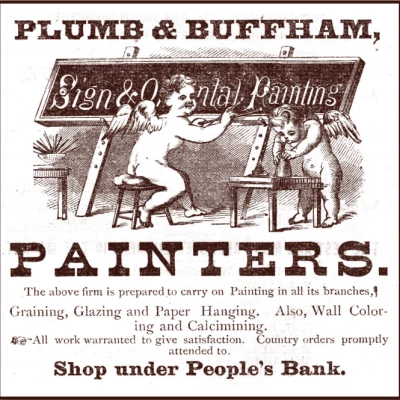
Building for a Growing Population
A growing community in need of housing meant a greater need for workers in the construction trades.Featuring:Kirkpatrick “Kirk” Buffham, (1844 – 1895), painterAlfred Carlsson Lundeen, (1862 – 1927), furniture makerCharles Mott, (1847 – 1923), Brick & Tile Company laborerPeter C. Duff, (1856 – 1919), African American carpenter

Powering the Community
Coal, used for generating electricity and for heating homes and businesses, was discovered beneath Bloomington in 1867. Soon after that coal miners were hired for the dangerous work of excavating it.Featuring:Peter Johnson, (1838 – 1914), coal miner“Mr. Herrick”, gas laborer
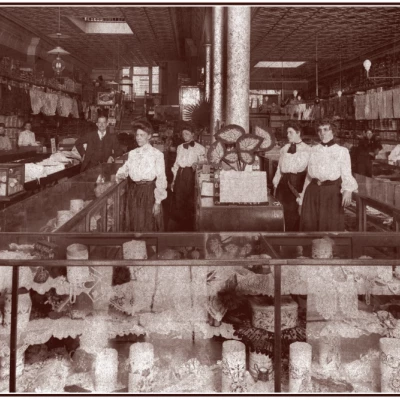
Merchandising Expands Dramatically
Merchants and their workers saw their businesses grow as the population increased and more goods were transported into the area via the railroad.Featuring:Marie M. Curtis Robbins, (1866 – 1956), sales clerkHoward Walton Kelly, (1871 – 1957), Traveling salesmanBert Neal, (1899 – 1972), foremanWilliam T. Smith, (1887 – 1964), Traveling salesmanGeorge P. Giering, (1878 – 1942), Department store clerk

Changing Healthcare Attitudes
The medical profession began to accept a limited number of women and African American professionals.Featuring:Louise Muxfeld, (1853 – 1909), midwifeEugene Gray Covington, (1872 – 1929), African American doctor
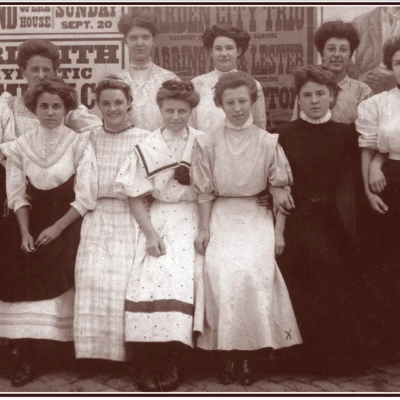
Providing Services
A growing population meant a greater demand for service jobs.Featuring:Ellen “Nellie" Skinner Reiner Flynn, (1873 – 1954), worker at Model Laundry
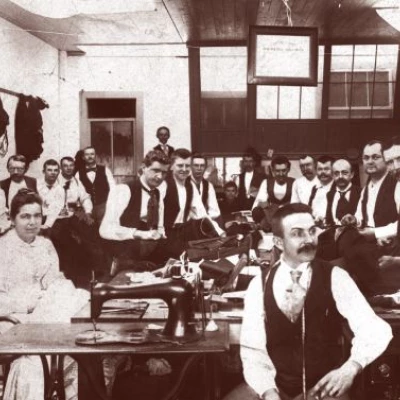
Crafting Custom Products for a Local Market
Skilled craftsmen set up shops and began to produce one of a kind items for the local market. They often hired apprentices who learned the trade on the job.Featuring:Charles A. Kleinau, (1858 – 1933), stone cutterCharles Gmehlin, (1834 – 1914), gunsmithMary J. Megowen Keith, dressmakerGustave A. Wohlfeil, tailorChrist Mandler, (1858 – 1949), cigar maker
 Making a Home
Making a Home
 A Community in Conflict
A Community in Conflict
 Working for a Living
Working for a Living
 Farming in the Great Corn Belt
Farming in the Great Corn Belt
 Abraham Lincoln in McLean County
Abraham Lincoln in McLean County